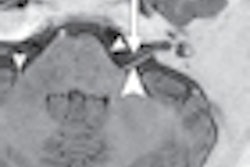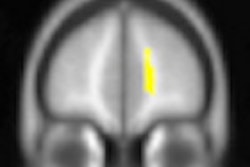Researchers at the University of Pittsburgh are using MRI to develop a technique called high-definition fiber tractography (HDFT) to trace the course of nerve fiber connections within the brain. With this technique, they hope to enhance the accuracy of neurosurgical planning and advance understanding of the brain's structural and functional networks.
"Our HDFT approach provides an accurate reconstruction of white-matter fiber tracts with unprecedented detail in both the normal and pathological human brain," wrote lead author Dr. Juan Fernandez-Miranda and colleagues in the August issue of Neurosurgery.
HDFT advances traditional tractography, which is limited by the inability of MR-based diffusion tensor imaging (DTI) to show the complex course of white-matter fiber tracts. DTI also cannot show the starting and ending points of white-matter tracts, according to the authors.
Over the past three years, Fernandez-Miranda and colleagues have been refining new fiber-mapping techniques, such as high-angular resolution diffusion imaging and diffusion spectrum imaging, to study the structural connections of the brain.
HDFT's color-coded images display the architecture of white-matter fibers and replicate known features of brain anatomy, including the folds and grooves of the brain and the characteristic shape of brain structures.
In patients with brain blood vessel abnormalities, HDFT provided information that could be useful for planning the most appropriate surgical approach, the researchers noted.
However, much more research is needed to refine the HDFT technique and evaluate its scientific and clinical applications, according to Fernandez-Miranda and colleagues.



.fFmgij6Hin.png?auto=compress%2Cformat&fit=crop&h=100&q=70&w=100)




.fFmgij6Hin.png?auto=compress%2Cformat&fit=crop&h=167&q=70&w=250)











